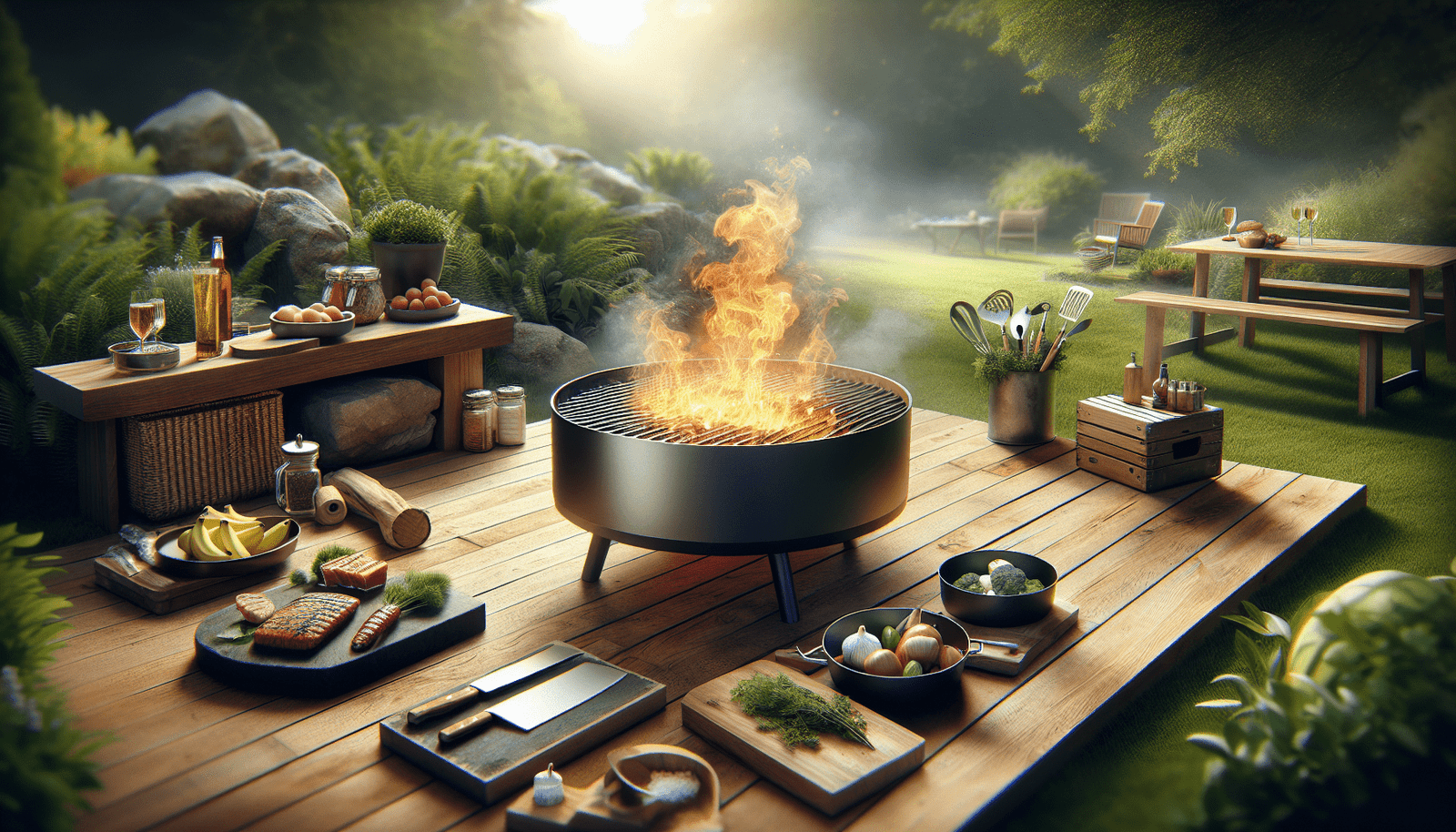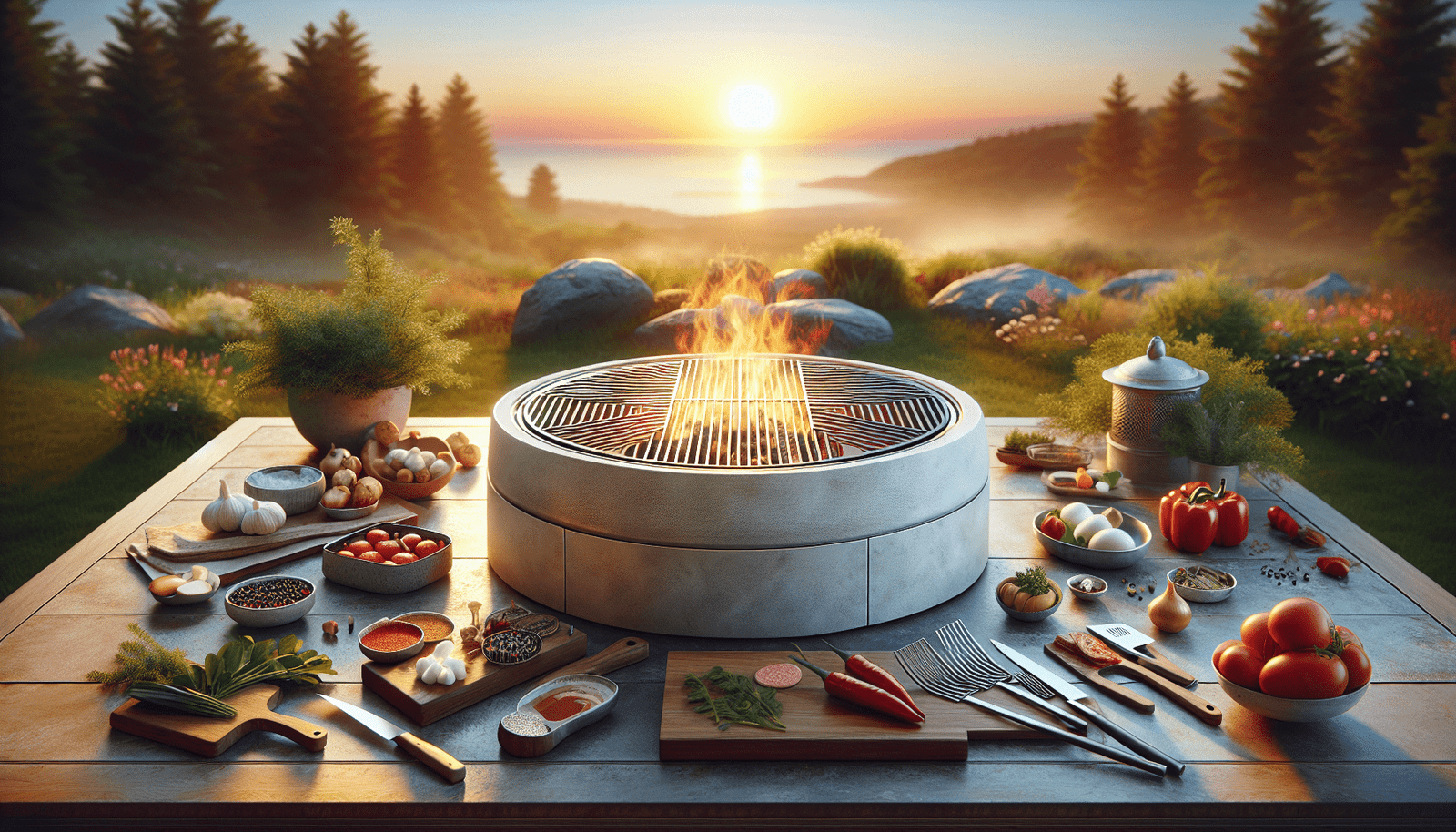Cooking outdoors can transform a simple meal into a memorable experience, and the versatility of fire pits can make this even more enjoyable. In the article “Can You Cook On Any Fire Pit?”, you’ll learn about the variety of fire pits available and which ones are suitable for cooking. Whether you’re using a traditional wood-burning fire pit, a propane-powered model, or something more unique, you’ll discover valuable tips and insights to ensure your outdoor cooking adventures are both safe and delicious. Get ready to enhance your culinary skills and make the most out of every gathering with the perfect fire pit that meets your cooking needs. Have you ever gazed into the flickering flames of a fire pit and wondered, “Can I cook on this?” You’re not alone. Whether you’re a camping enthusiast or someone who loves backyard gatherings, cooking over an open flame can bring a whole new level of enjoyment to your outdoor experience. But is it possible to cook on just any fire pit?
Understanding Different Types of Fire Pits
Before diving into whether You can cook on any fire pit, you need to understand the different types available. Each type has its own merits and pitfalls when it comes to cooking.
Wood-Burning Fire Pits
Wood-burning fire pits are the most traditional type. They use wood logs or charcoal as fuel and are popular for their rustic, authentic feel.
- Advantages: Easy to set up, natural flavor, adjustable flame.
- Disadvantages: Produces ash, might require more maintenance, and sometimes the heat can be difficult to control.
Gas Fire Pits
Gas fire pits are a modern take on the traditional fire pit, using propane or natural gas as fuel. They ignite easily and provide a steady flame.
- Advantages: Easy to ignite, consistent heat, low maintenance.
- Disadvantages: Lack of authentic wood flavor, more expensive to operate, fuel-dependent.
Gel Fuel Fire Pits
Gel fuel fire pits use canisters of gel fuel that are easy to light and manage. These are often smaller and portable.
- Advantages: Easy to use, portable, no ash.
- Disadvantages: Limited cooking capability, less heat output, canister cost.
Electric Fire Pits
Electric fire pits may not seem like the go-to choice for cooking, but they do have their own set of advantages.
- Advantages: Easy to use, low maintenance, can be used indoors.
- Disadvantages: Not practical for cooking, limited heat output.
Can You Cook on Any Fire Pit?
Now that you understand the basic types of fire pits, you might wonder if you can cook on any of them. The answer isn’t straightforward; it depends largely on the type of food you plan to cook and the fire pit you’re using. Let’s break it down:
Considerations for Cooking on Wood-Burning Fire Pits
These fire pits are versatile and perfect for cooking various foods, provided you manage the heat carefully. Place a grill grate over the flames for direct grilling, or use a tripod and a pot for soups and stews.
Direct Grilling
You can grill meats, vegetables, and even fruits directly. Pay attention to:
- Flame control: Use smaller logs and charcoal for a manageable fire.
- Grill grates: Preferably, use an adjustable grill grate for better control.
Indirect Cooking
For roasting or smoking, set the food at a distance from the flame.
- Tripod and pots: Ideal for stews and soups.
- Elevated grill: Suitable for indirect heat cooking.
Considerations for Cooking on Gas Fire Pits
Gas fire pits can also be used for cooking, although the results might differ from wood-burning fire pits.
Seasonal and Consistent Heat
Gas fire pits provide a steady flame that is easy to control.
- Small cookware: Use smaller pots and specific grilling accessories.
- Avoid large gatherings: Gas fire pits are ideal for small groups due to limited cooking space.
Considerations for Cooking on Gel Fuel Fire Pits
Gel fuel fire pits are less practical for full-scale cooking but can be used for simpler tasks like toasting marshmallows or heating small dishes.
Limited Options
These fire pits provide less heat, leading to limited cooking options.
- Small tasks: Perfect for roasting marshmallows or making s’mores.
- Limited space: Not suitable for elaborate meals.
Electric Fire Pits
Electric fire pits are generally not intended for cooking, though some may incorporate small heating features.
- Indoor use: Perfect for ambiance rather than cooking.
- Limited heat: Not enough heat for serious cooking.

Essential Cooking Accessories for Fire Pits
Regardless of the type of fire pit you have, specific accessories can make the cooking experience more satisfying and efficient.
| Accessory | Usefulness | Which Fire Pit? |
|---|---|---|
| Grill Grate | Direct grilling | Wood-burning, Gas |
| Dutch Oven | Stews, soups, roasts | Wood-burning |
| Skewers | Kabobs, marshmallows | All types |
| Tripod | Hanging pots and pans | Wood-burning |
| Heat Shields | Protect from direct flame | All types, mainly Gas |
| Cooking Gloves | Handling hot items | All types |
| Thermometer | Check food temperature | All types |
Safety Tips for Cooking on Fire Pits
Cooking over an open flame comes with its risks. Following some basic safety guidelines can ensure a fun and incident-free cooking experience.
Fire Management
- Control the flame: Use flame-control tools to manage the intensity.
- Have water and sand handy: In case the fire gets out of control.
Cooking Safety
- Use long-handled tools: This prevents burns from close contact with the flame.
- Check for hot spots: Be mindful of uneven heat distribution.
Food Safety
- Cook thoroughly: Use a meat thermometer to ensure food reaches a safe internal temperature.
- Avoid cross-contamination: Use separate utensils and plates for raw and cooked food.

Setting Up Your Fire Pit for Cooking
Knowing how to properly set up your fire pit can make a significant difference in your cooking experience. Let’s look at setup tips for different types of fire pits.
Setting Up a Wood-Burning Fire Pit
- Choose the right wood: Hardwoods like oak and hickory provide long-lasting heat and good flavor.
- Create a base: Start with kindling and small logs, then build up to larger logs.
- Place a grill grate: Positioning a grill grate directly over the coals is perfect for grilling.
Setting Up a Gas Fire Pit
- Check fuel levels: Ensure your propane tank is full or connected correctly.
- Preheat: Allow your fire pit to preheat to ensure a consistent cooking temperature.
- Add accessories: Utilize grill grates and heat shields to optimize cooking.
Setting Up a Gel Fuel Fire Pit
- Position fuel canisters: Place them according to the manufacturer’s instructions.
- Ignite carefully: Use long matches or a long lighter to light the canisters.
- Limited cooking area: Use small pots or skewers for this type of fire pit.
Setting Up an Electric Fire Pit
- Location matters: Ensure the fire pit is placed near an electrical outlet.
- Switch on: Turn it on according to the user manual.
- Ambiance over functionality: Use it more for creating an ambiance rather than cooking.
Cooking Techniques for Fire Pits
Understanding different cooking techniques can elevate your fire pit cooking game, regardless of the type you own.
Grilling
Perfect for all types of fire pits, grilling is straightforward and quick.
- Direct heat: Place food directly over the flames or coals.
- Seasoning: Pre-season your meat and veggies for better flavor.
Roasting
Roasting is ideal for wood-burning and gas fire pits.
- Indirect heat: Position the food at a distance from the direct flames.
- Rotate: Rotate the spit or cooking grate periodically for even cooking.
Stewing and Boiling
These techniques are more suited for wood-burning fire pits.
- Use Dutch ovens: Place them directly over the coals.
- Tripod setup: Hang pots using a tripod for more controlled cooking.
Smoking
Smoking infuses your food with a rich, smoky flavor.
- Wood chips: Use soaked wood chips for smoking.
- Closed lid: For gas fire pits, utilize a grill with a lid to trap the smoke.
Popular Recipes for Fire Pit Cooking
Trying out some simple yet delicious recipes can make your fire pit experience truly delightful. Here are a few to get you started:
Grilled Steak
Ingredients
- 2 sizable steaks
- Olive oil
- Salt and pepper
- Herbs like rosemary or thyme
Instructions
- Season the steaks with olive oil, salt, pepper, and herbs.
- Preheat the grill grate over your fire pit.
- Grill each side of the steak for about 5-7 minutes, depending on thickness and desired doneness.
- Let the steak rest for a few minutes before serving.
Campfire Chili
Ingredients
- Ground beef (1 lb)
- Diced tomatoes (1 can)
- Kidney beans (1 can)
- Onion (1, chopped)
- Garlic (2 cloves, minced)
- Chili powder, salt, and pepper
Instructions
- Heat a Dutch oven over the fire pit.
- Cook the ground beef until browned, then add onions and garlic.
- Stir in tomatoes, beans, and seasonings.
- Let it simmer for 30-40 minutes.
Smoked Salmon
Ingredients
- Salmon fillets
- Olive oil
- Lemon juice
- Salt and pepper
- Wood chips for smoking
Instructions
- Season the salmon with olive oil, lemon juice, salt, and pepper.
- Place it on a grill grate or smoker box over the fire pit.
- Add soaked wood chips to the fire for smoke.
- Cook for around 20 minutes, or until the fish flakes easily.
Maintenance and Care for Your Fire Pit
Proper maintenance can prolong the life of your fire pit and make cooking an easier and more enjoyable experience.
Regular Cleaning
- Remove ash and debris: Regularly clear out ash and leftover food particles.
- Wipe down grill grates: Use a wire brush to clean the grates after every use.
Seasonal Maintenance
- Inspect for damage: Check for wear and tear, especially in wood-burning fire pits.
- Protect against elements: Use covers to protect your fire pit from rain and snow.
Gas Fire Pit Maintenance
- Check gas lines: Regularly inspect the gas lines for leaks or damage.
- Clean burners: Ensure the burners are free from obstructions.
Gel Fuel and Electric Fire Pits
- Gel fuel: Ensure canisters are disposed of properly.
- Electric parts: Clean and check electrical connections regularly.
Conclusion
So, can you cook on any fire pit? The answer is yes, but with some important considerations. Understanding the type of fire pit you have and how to use it for cooking can significantly improve your outdoor culinary experience. Whether you prefer the traditional wood-burning fire pit or the convenience of a gas fire pit, there’s no limit to the delicious meals you can prepare. Always make safety a priority, and don’t forget to enjoy the process as much as the final dish.
Ready to put your fire pit to the ultimate test? Grab your ingredients, fire up that pit, and let the cooking adventures begin!
